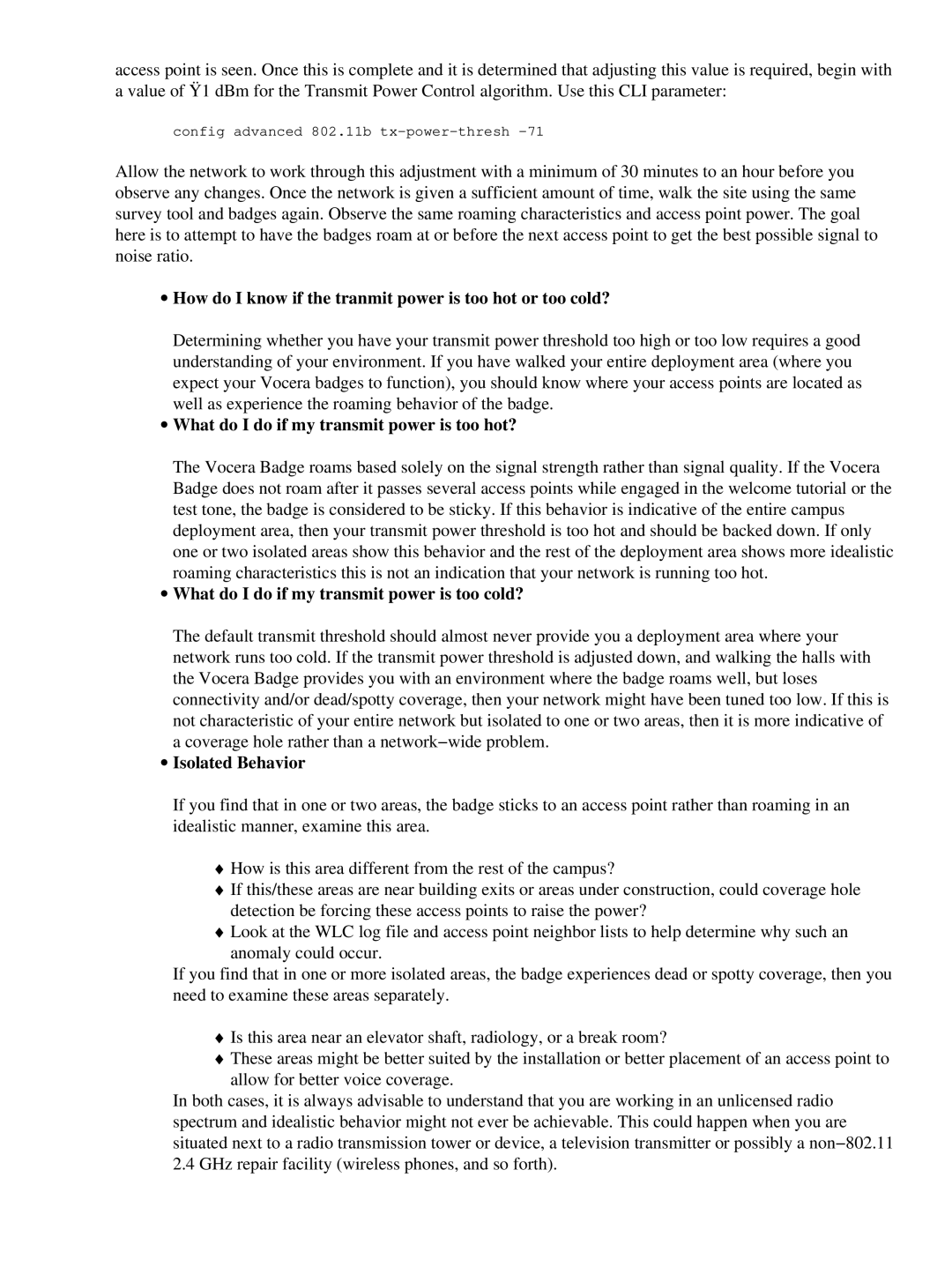access point is seen. Once this is complete and it is determined that adjusting this value is required, begin with a value of Ÿ1 dBm for the Transmit Power Control algorithm. Use this CLI parameter:
config advanced 802.11b tx−power−thresh −71
Allow the network to work through this adjustment with a minimum of 30 minutes to an hour before you observe any changes. Once the network is given a sufficient amount of time, walk the site using the same survey tool and badges again. Observe the same roaming characteristics and access point power. The goal here is to attempt to have the badges roam at or before the next access point to get the best possible signal to noise ratio.
∙How do I know if the tranmit power is too hot or too cold?
Determining whether you have your transmit power threshold too high or too low requires a good understanding of your environment. If you have walked your entire deployment area (where you expect your Vocera badges to function), you should know where your access points are located as well as experience the roaming behavior of the badge.
∙What do I do if my transmit power is too hot?
The Vocera Badge roams based solely on the signal strength rather than signal quality. If the Vocera Badge does not roam after it passes several access points while engaged in the welcome tutorial or the test tone, the badge is considered to be sticky. If this behavior is indicative of the entire campus deployment area, then your transmit power threshold is too hot and should be backed down. If only one or two isolated areas show this behavior and the rest of the deployment area shows more idealistic roaming characteristics this is not an indication that your network is running too hot.
∙What do I do if my transmit power is too cold?
The default transmit threshold should almost never provide you a deployment area where your network runs too cold. If the transmit power threshold is adjusted down, and walking the halls with the Vocera Badge provides you with an environment where the badge roams well, but loses connectivity and/or dead/spotty coverage, then your network might have been tuned too low. If this is not characteristic of your entire network but isolated to one or two areas, then it is more indicative of a coverage hole rather than a network−wide problem.
∙Isolated Behavior
If you find that in one or two areas, the badge sticks to an access point rather than roaming in an idealistic manner, examine this area.
♦How is this area different from the rest of the campus?
♦If this/these areas are near building exits or areas under construction, could coverage hole detection be forcing these access points to raise the power?
♦Look at the WLC log file and access point neighbor lists to help determine why such an anomaly could occur.
If you find that in one or more isolated areas, the badge experiences dead or spotty coverage, then you need to examine these areas separately.
♦Is this area near an elevator shaft, radiology, or a break room?
♦These areas might be better suited by the installation or better placement of an access point to allow for better voice coverage.
In both cases, it is always advisable to understand that you are working in an unlicensed radio spectrum and idealistic behavior might not ever be achievable. This could happen when you are situated next to a radio transmission tower or device, a television transmitter or possibly a non−802.11 2.4 GHz repair facility (wireless phones, and so forth).
